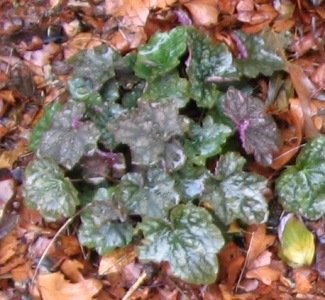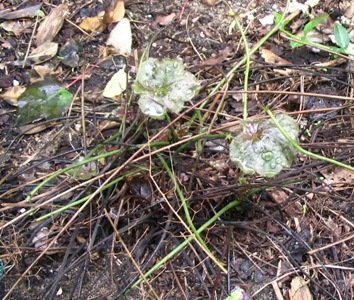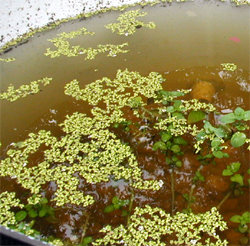





A few years ago, my visit to fellow gardener's new house ended with us buying each other plants at her favorite nursery. My gift was a pair of Coral Bells, Heuchera "Montrose Ruby." I planted them in the perfect spot in my garden- well, I thought it was perfect but the Heuchera disagreed. It also disagreed with perfect spots number 2 and 3. But I can't give up on an innocent plant. Can you?
Heuchera Basics
Also called Coral Bells or Alumroot, Heuchera is a perennial grown for its gorgeous, colorful foliage. Cultivars range in color from lime green and charteuse into peach and pink, and in red tones from silvered burgundy to a near black. If this choice of colors isn't enough, there are variegated Alumroots. They look like a Coleus in a perennial, mounded form. Two recent Dave's Garden articles display and describe the rainbow of Coral Bells available. Here's a search result for "heuchera" in Dave's Garden articles.The Perfect Spot, or Not
Vaguely aware that my Heuchera would want some shade, I first placed it in "the Perfect Spot" (pretty much only meaning currently empty) near some maple trees. I hastily chopped a three inch square hole in the maple roots and pressed the plant in. Unfortunately, that spot got more midday sun than I thought. The tender leaves quickly scorched. Well, easy fix- I moved them to the other side of the maples where shade lasted all day, AKA Perfect Spot number 2. The Alumroot now had shade, but I soon learned it also had dry soil from tree roots. On top of that, the foliage color on this cultivar was too dark to appreciate in this very shady area. It barely grew, and what leaves there were disappeared in the dappled shade.
Trial and Error
Where to now? On to Perfect Spot number three. I had space in my front yard, in a bed with evergreen shrubs. Here was a tree-root free spot, with light shade from a nearby dogwood. Ms. "Montrose Ruby" settled in well and things were looking pretty good. I took her off the critical list. Then one day I checked and found a crisis. All the lovely lettucey leaves had been completely eaten, leaving long spindly stems. I never did determine just what munched on the burgundy Heuchera foliage.
Take one happy Heuchera frolicking in the spring rain...Add unknown assailant(s)... Result: a critical situation. Are there agri-paramedics?


What's left to do?
Even sans leaves, the roots and growing point of the Alumroot remained, and there was hope for recovery. I had improved the growing conditions, but this spot still tended to dryness and was not conducive to my giving the plant extra watering or attention. This poor thing wasn't giving up yet so neither would I. But we needed to go into critical care.
Fish emulsion,** stat!
Still not willing to give up on the scraps of life left in the base of the plants, I moved the Coral Bells to yet another area among columbines and foxgloves. Close to my vegetable garden and compost, it's a bed that gets more of my TLC. Decent shade? Check. No tree roots? Check. A mild winter and lots of spring rain have chipped in to help my plants to a miraculous recovery.
Lessons learned- what hurt my Heuchera
Better luck next time?
Success with a brand new garden specimen is more assured when you take a little time to find out what the plant will need. Check your books and magazines for basic care. Augment that with a look at Dave's Garden's Plantfiles, where you can read real gardeners comments on some of the 330 cultivars of coral bells (genus Heuchera) listed there. Then browse Dave's Garden Articles. A plant with sentimental value as well as beauty just has to have a second chance (and third, and fourth...) So go forth bravely to the nursery, fall in love with a plant and bring it home. Chances are good that you can make each other happy, eventually, with some care, research, trial and error, and maybe luck.
~*~ ~*~ ~*~ ~*~ ~*~ ~*~ ~*~ ~*~ ~*~ ~*~ ~*~ ~*~ ~*~
Here's a link to the first article in the series, "Rejuvenating an Old Episcia"
Bunny picture by Kevin Connors and used courtesy of MorgueFile. com.
Gratitude to fellow DG writers, McGlory, for the title idea, Who Cures (a) Heuchera, and carrielamont for the thumbnail title Helping Heuchera
* Special thanks to Ian Maxwell (GranvilleSouth) for this introduction and the series concept.
** Here's a recent discussion thread (sorry, subscribers only) extolling the virtues of fish emulsion fertilizer.
Heuchera pictures taken by the author.
Copyright © www.100flowers.win Botanic Garden All Rights Reserved